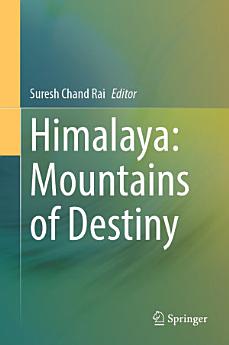關於本電子書
關於作者
Prof. Suresh Chand Rai is a Professor and Former Chair of the Department of Geography, Delhi School of Economics, University of Delhi. He did his Master’s in Geography (1979) and Doctor of Philosophy (1984) from Banaras Hindu University, Varanasi. His research expertise includes watershed management, mountain hydrology, ecotourism, biodiversity conservation, wetland hydrology, etc. His significant contributions are in the field of land and water resource management. Professor Rai has received international recognition for his pioneering studies on various topics in the Eastern Himalayas. Professor Rai won in the category of "Scientific Achievement" for the prestigious international award known as "Crystal Compass" which was given by the Russian Geographical Society, Russia, 2024. His work has been outstanding in the Integrated Watershed Management in the Sikkim Himalaya have been recognized through the Soil and Water Conservation Society of USA, Award, 1999. The extensive studies made by Prof. Rai on various aspects of mountain hydrology have not only helped in understanding the structure and function of the systems but also in finding out means of how to make the system sustainable. He has published more than 150 research papers in various impact factor/peer-reviewed journals and books (Scopus h-index- 24). He served as Secretary General of the National Association of Geographers, India (NAGI), the largest society of Geographers in India, from 2010 to 2022. Prof. Rai is elected vice-president of the Asian Geographers Association, Beijing, P.R. China. Prof. Rai has been an Editor of the Journal of the National Association of Geographers, India since 2023.





